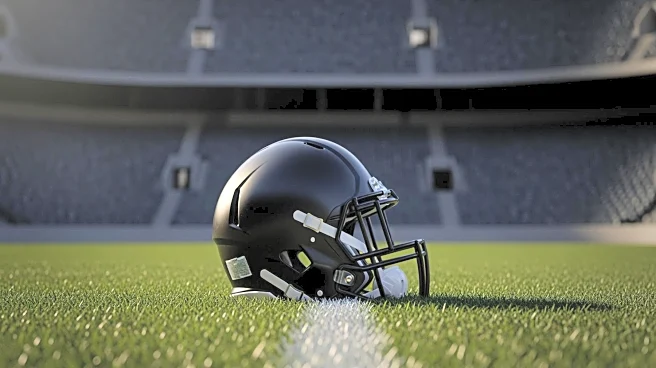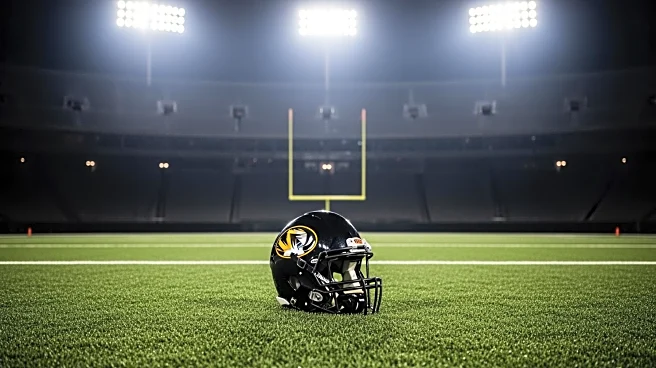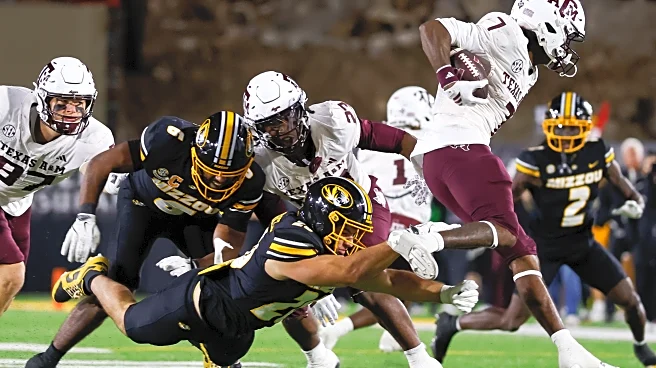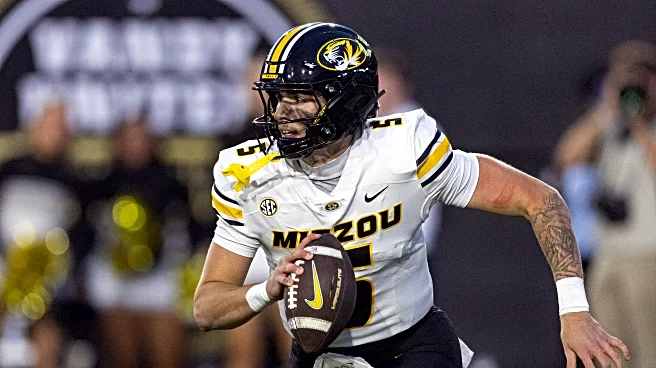What's Happening?
Missouri's football team will face No. 3 Texas A&M without their leading tight end, Brett Norfleet, who has been ruled out due to a shoulder injury. Norfleet suffered the injury during Missouri's recent
game against Vanderbilt, where the team lost 17-10. Initially considered day-to-day, Norfleet's condition has not improved enough for him to play. His absence is significant as he leads all SEC tight ends with five touchdown receptions and is third on the team with 26 receptions. Missouri's offensive strategy is further complicated by the absence of starting quarterback Beau Pribula, who dislocated his ankle in the same game. Freshman Matt Zollers will make his first career start against Texas A&M, a team known for its strong defense, allowing only 321.5 total yards per game.
Why It's Important?
The absence of Brett Norfleet is a major setback for Missouri as they prepare to face an undefeated Texas A&M team. Norfleet's contributions have been crucial to Missouri's offense, and his absence could impact the team's ability to score against a formidable opponent. Additionally, with backup quarterback Matt Zollers starting, Missouri faces the challenge of adjusting their offensive strategy to accommodate the loss of key players. This situation highlights the importance of depth and adaptability in college football, as injuries can significantly alter a team's performance and prospects in the season.
What's Next?
Missouri will need to rely on their remaining offensive players and adjust their game plan to compensate for the loss of Norfleet and Pribula. Coach Eli Drinkwitz emphasized the need to support Zollers in executing plays effectively. The game against Texas A&M is scheduled for 3:30 p.m. ET and will be broadcast on ABC. Missouri's performance in this game could influence their standing in the SEC and their prospects for the remainder of the season.
Beyond the Headlines
The situation underscores the physical demands and risks associated with college football, where injuries can have significant implications for players' careers and team dynamics. It also raises questions about the support systems in place for injured athletes and the strategies teams employ to manage such challenges.













